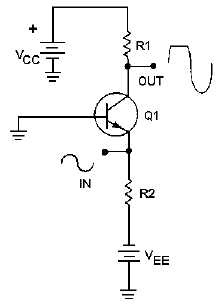1-7
shape and frequency. In some cases, there may be a phase difference between the input and output signal
(usually 180º), but the signals are still considered to be "good copies." If the output signal is not like the
input signal in shape or frequency, the signal is said to be DISTORTED. DISTORTION is any undesired
change in a signal from input to output.
The efficiency of an amplifier refers to the amount of power delivered to the output compared to the
power supplied to the circuit. Since every device takes power to operate, if the amplifier operates for 360º
of input signal, it uses more power than if it only operates for 180º of input signal. If the amplifier uses
more power, less power is available for the output signal and efficiency is lower. Since class A amplifiers
operate (have current flow) for 360º of input signal, they are low in efficiency. This low efficiency is
acceptable in class A amplifiers because they are used where efficiency is not as important as fidelity.
Class AB Operation
If the amplifying device is biased in such a way that current flows in the device for 51% - 99% of the
input signal, the amplifier is operating class AB. A simple class AB amplifier is shown in figure 1-5.
Figure 1-5.—A simple class AB transistor amplifier.
Notice that the output signal is distorted. The output signal no longer has the same shape as the input
signal. The portion of the output signal that appears to be cut off is caused by the lack of current through
the transistor. When the emitter becomes positive enough, the transistor cannot conduct because the base-
to-emitter junction is no longer forward biased. Any further increase in input signal will not cause an
increase in output signal voltage.
Class AB amplifiers have better efficiency and poorer fidelity than class A amplifiers. They are used
when the output signal need not be a complete reproduction of the input signal, but both positive and
negative portions of the input signal must be available at the output.
Class AB amplifiers are usually defined as amplifiers operating between class A and class B because
class A amplifiers operate on 100% of input signal and class B amplifiers (discussed next) operate on
50% of the input signal. Any amplifier operating between these two limits is operating class AB.

